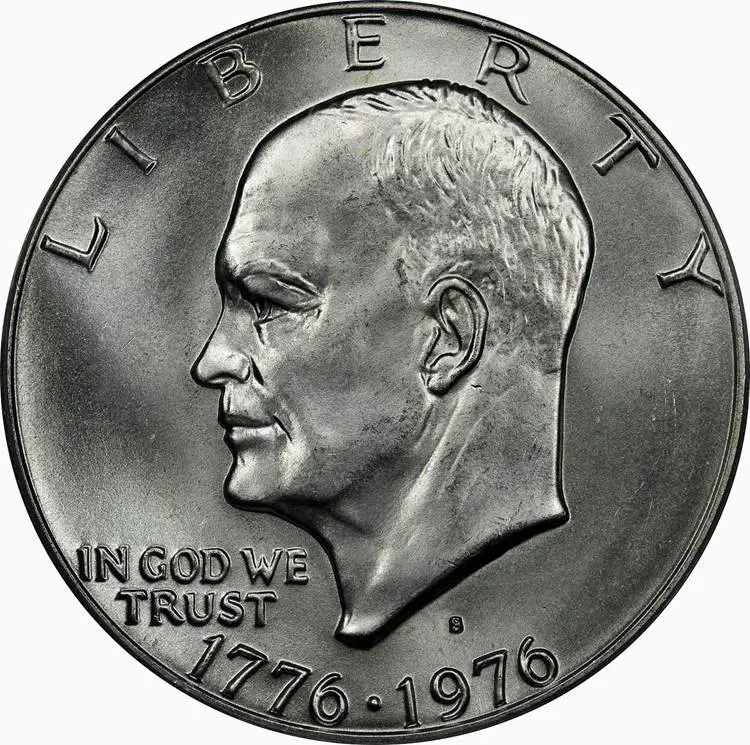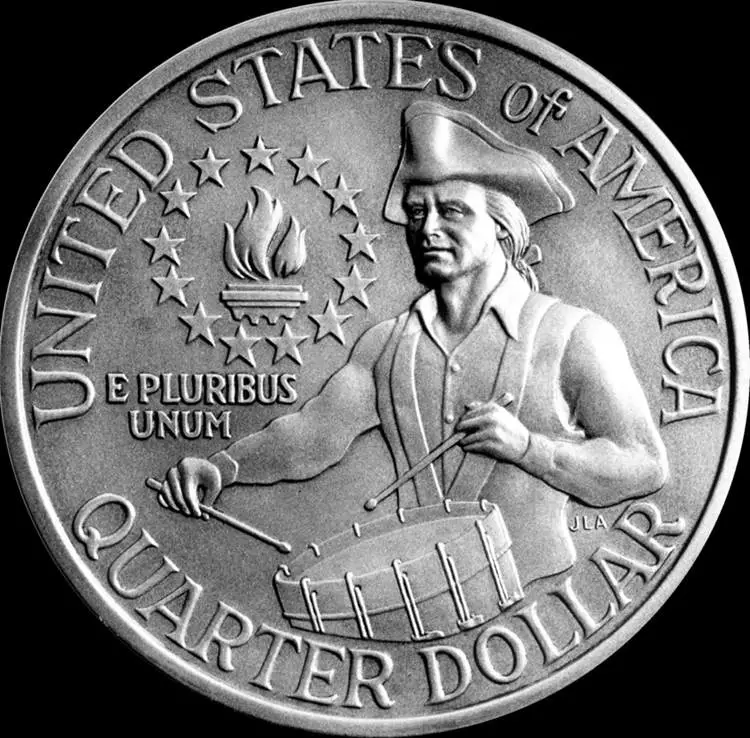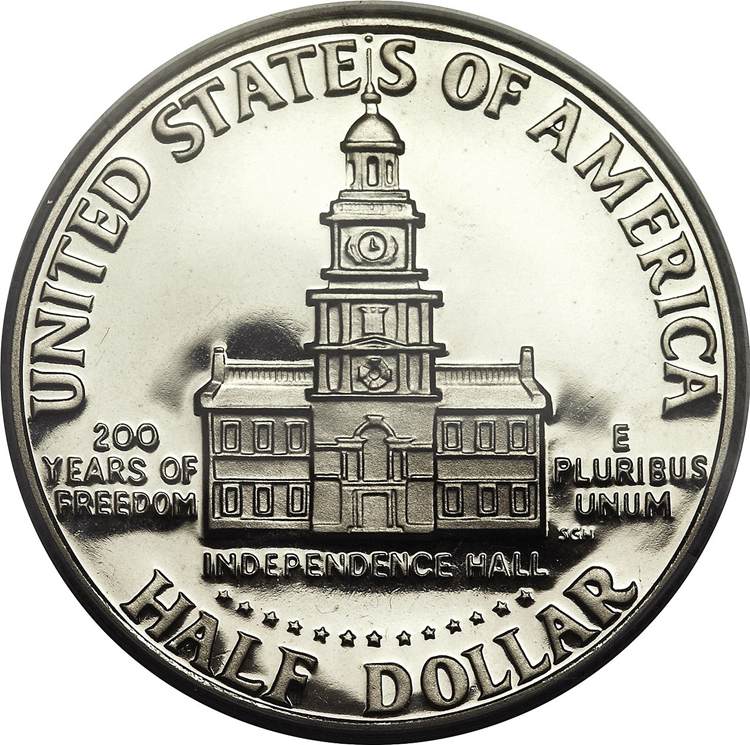The United States has had a rich history of coins, and considering the rarity of the old ones, most of them are priced quite high nowadays. But some represent special historical events and hence hold even more significance. One such coin is the George Washington bicentennial quarter produced during the 200th independence anniversary in 1975. The cultural changes in America that began in the 1960s were carried on to the 1970s when America celebrated two centuries of the Declaration of Independence through bicentennial quarters with the dual date of 1776-1976 featured over it.
Since the coins were made available to most populations and now hold a premium antique value honoring the occasion, people are always looking to sell the 1776 to 1976 quarter dollar in the antique market. However, not many know the real worth of the standard or silver quarters. This piece aims to give you a comprehensive guide over 1776 1996 quarter dollar. Keep reading to find out how much is a standard 1776 to 1976 quarter dollar worth.
History Behind the Production of 1776-1976 Quarter Dollar

The Eisenhower dollar, with the double date 1776–1976
As the United States of America was ready to celebrate the 200th anniversary of the Declaration of Independence, these coins were in production a year before their release. The production of these commemorative 1976 coins began on July 4, 1975. Mints were ordered to produce them in billions.
Moreover, some different silver quarter compositions and special finishes were designed for coin collectors. Over the course of eighteen months before their release, several billion of the 1976 Bicentennial quarters were made. Let’s roll through the production of both business strike and special edition coins in detail.
Total mintages of two primary 1976 business strike Bicentennial coins in circulation included the following:
– 809,784,016– The 1776-1976 copper-nickel clad from Philadelphia (no mintmark)
– 860,118,839– The 1776-1976-D copper-nickel clad from Denver
Total mintages of three special edition coins marketed especially to coin collectors included the following:
– 7,059,099– The 1776-1976-S Proof copper-nickel clad
– 11,000,000– The 1776-1976-S uncirculated silver-clad (40% silver)*
– 4,000,000– The 1776-1976-S Proof silver-clad (40% silver)*
* The 1980s saw millions of silver Bicentennial quarters melted or demolished, leaving very few and rare ones behind. Even though there are still plenty of them, the number is nowhere near the original 15 million.
1776 to 1976 Quarter Dollar Worth
Most people don’t know, but these valuable coins only hold a premium value if they are in uncirculated condition. If you have 1776-1976 clad quarters in standard circulated condition, they are only worth their face value, which is $0.25. On the other hand, if your 1776-1976 S proof quarter is in mint state or Proof 65(PR 65) condition, it can be worth around $5 or a lot more.
Value of Silver Quarter with Errors
A coin with errors has a high chance of getting sold at way over its face value. Depending on the condition and type of error, you can sell it at a good price, starting from five dollars and thousands of dollars. A perfect example would be a recently sold 1976 D 25C Bicentennial quarter graded MS65. The coin titled DDO FS-101 (doubled die obverse) was sold for almost $4000 during an auction.
Another example is a 1976-D 25C Bicentennial quarter graded MS67 that went for over $5000 during an auction. It was struck on a nickel planchet mint error. While the dual dates and mint mark are quite visible, much of QUARTER and LIBERTY are invisible.
Bicentennial Coins Design
The three coins announced to proclaim the bicentennial in 1975 included quarter, half dollar, and one-dollar coins. George P. Schultz, then Secretary of the Treasury, asked the Director of the Mint, Mrs. Mary Brooks, to design three coins that could honor the 200th anniversary of the American Revolution.
The production began on July 4, 1975, for these new commemorative coins that Treasury Department discontinued earlier in 1954 due to some special interest groups and politicians that abused the commemorative coin program back then.
Who Designed the Reverse Side of Washington Quarter

Reverse of the 1776-1976 Bicentennial quarter struck in 1975 and 1976. Design by Jack L. Ahr.
The early 1970s were full of great triumphs for Americans since the country celebrated its bicentennial Independence anniversary in a multi-year event. Apart from thousand other things, the Treasury Department decided to roll out the first-ever circulating commemorative coins to make the 200th anniversary of the signing of the Declaration of Independence memorable forever.
The department took help from the National Sculpture Society, directing them to conduct a nationwide design contest among its members. A jury of experts was appointed to judge several thousand designs submitted for each denomination.
Finally, the design selected was from Jack L. Ahr, who won the contest in 1975. We can say that the first ever bicentennial quarters were made with Ahr’s design.
Later in 1976, Seth Huntington and Dennis R. Williams were also invited to design half-dollar and dollar reverse. There were later controversies over the design when Ahr was accused of copying from a 1973 stamp from William A Smith. Even then, the design is already in circulation and still remains over the 1776 to 1976 quarter dollar.
Collection of Bicentennial Quarters
Since most bicentennial coins are in circulation, not many coin collectors are attracted to the standard 1776 1996 bicentennial quarter. Additionally, most of the special edition coins were either melted or not kept properly by collectors.
The special edition silver bicentennial quarters were made and mostly purchased directly from the United State Mint by individuals or collectors. But lack of ideal storage conditions ended up damaging most of the special edition quarters.
Some of them might still be inside boxes that ended up in basements or attics. Moisture and inappropriate temperature cause corrosion and toning in these silver quarters. If you are looking to collect bicentennial uncirculated coins, avoid buying the ones with a haze on their surface.
Is there a 1976 silver dollar coin?
Around 11,000,000 1776-1976-S uncirculated silver-clad and 4,000,000 1776-1976-S proof silver-clad with 40% silver alloy were special edition coins marketed to collectors. However, in the 1980s, several million 1776 to 1996 quarter dollar made with silver were melted, cutting the number down to very low from the original 15 million. 1976 Eisenhower dollar with silver celebrates the nation’s bicentennial with a special design on it.
How to know if I have a silver bicentennial quarter?
Coins have special markings that define the material used to create them, especially coins made for special events such as the 1976 bicentennial quarter. The usual 40% silver coins are easy to identify due to a thin line of grey silver blended with white nickel found in the coins. If the thin line you see on your bicentennial quarter is a whitish nickel mixed with reddish copper, you probably have a copper-nickel clad coin.
Are there any rare Bicentennial quarters?
With over 1.6 billion coins made only worth face value and distributed just between Denver and Philadelphia mint facilities, it’s not rare to find bicentennial quarters as pocket change. Many predicted them to be valuable in the future for honoring such a big occasion, but you can easily buy some collector-quality quarters from your local coin dealer.
Still, it’s also important to know that most of these were business strike coins meant for circulation. Nicely struck, high-quality bicentennial quarters are still rare to find. Since the United States mint was under pressure to increase the quantity, they had to sacrifice the quality in most.
But specially designed collector coins were manufactured with immense care, making them resist any scratches or surface damage for years. These rare coins included uncirculated 40% silver quarters, Proof copper-nickel clad, and Proof silver coins.
Where is the Mint Mark on a Bicentennial Quarter?
Mint marks were signings of the manufactured mint factories there’s always a mint mark on the 1776 1976 bicentennial quarter that a coin collector usually looks for to know where it is made. The lower right corner of a 1976 bicentennial quarter carries either the letter “D” or “S,” referring to the Denver and San Francisco mint, respectively.
What year of quarters have the highest value?
Quarters have been manufactured with similar face values since the 1970s, but coins manufactured in 1964 or before were made of 90% silver alloy, making them worth much more than their original face values. If you have quarters dated anywhere from 1796 to the 1890s, you may have the rarest ones in the USA.
What are bicentennial dollars worth?
You can get around $18 for the standard 1776-1976 silver dollar in MS 63 uncirculated condition. Apart from that, you can expect around $20 for the 1776-1976 proof silver dollar in PR 65 condition. Valued highest among bicentennial dollars is the MS 65 gem uncirculated condition at around $22.
Kennedy Bicentennial Half Dollar Worth

Half dollar Bicentennial reverse
As mentioned earlier, most standard coins are worth face value only in circulated condition, and this includes the $0.50 Kennedy 1776-1976 half dollars. However, if you have Kennedy bicentennial S proof half dollars in PR 65 condition, it carries a value of around $4.
Who is the guy on the back of a 1776 1976 bicentennial quarter?
The reason these are also popular as Washington quarters is because they feature a bust of President George Washington. The reverse of the coin features thirteen stars encircling a victory torch on the upper left side along with a left-facing Colonial drummer.
The obverse remained the same for the Washington quarter, the Eisenhower dollar, and the Kennedy half dollar with the only change of dual-date of 1776-1976. The reverse, however, was different, with winning designs by Jack L. Ahr on the Washington quarter, Seth Huntington on the Kennedy half-dollar, and Dennis R. Williams on the Eisenhower dollar.
How to Determine Your Silver Dollar Value?
A silver dollar’s melt value determines how much it’s worth. When melted, the mass and rarity of the silver found in the coin can give its exact value. The year manufactured can provide a lot of information about a coin’s value. For instance, the 1794 Flowing Hair Silver Dollar, which is also the first ever silver dollar struck by the United States, can value in millions. In fact, a coin dealer named Bruce Morelan spent $10 million to own one of these in 2013.
Top 5 most expensive quarters ever sold
Here is a list of the top 5 most expensive quarters
- A Draped Bust Quarter from 1804 was sold at $157,702.
- A Capped Bust Quarter from 1827 was sold at $109,140.
- A CC Seated Liberty Quarter from 1870 was sold at $103,142.
- A Capped Bust Quarter from 1823 was sold at $96,775.
- A CC Seated Liberty Quarter from 1871 was sold at $71,473.
Highest Worth Quarters in Circulation
While mostly uncirculated quarters hold the premium value, there are few in circulation quarters sold very high than their face value.
- The Capped bust quarter from 1835 is sold for around $599.
- The Standing Liberty quarter from 1923 is sold for around $554.
- The Washington quarter with error from 1964 is sold for around $545.
- The D Washington Quarter from 1932 is sold for around $407.
What’s the most expensive coin in the world?
The Flowing Hair Silver is still among the most expensive coins in the world, considering one of them being sold for $10 million in 2013. That is why the first ever silver coin, the 1794/5 Flowing Hair Silver/Copper dollar, that US Federal Government ever minted and issued was the most expensive coin in the world. When it comes to the most expensive Kennedy half-dollar, it should be the 1964 Kenndy half-dollar that went for a whopping $108,000 during a Heritage Auctions in 2019.
Value of a Gold Sacagawea Coin
Minted in billions since 2000, the regular Sacagawea coin still has the same value of worth $1. However, a few special varieties, such as the 2000-P Cheerios, attract coin collectors and may have a little higher worth than the face value.
Final Word
Here we conclude everything about the famous 1776 to 1976 quarters while also shedding some light on other expensive antique coins. Coins often cross their face value as the material used in minting reaches a higher value in the market.
Bicentennial quarter and other coins with silver are not common now, but they have been around earlier and now have a special value among collectors. To get more information on coin worth, keep following our blogs.
